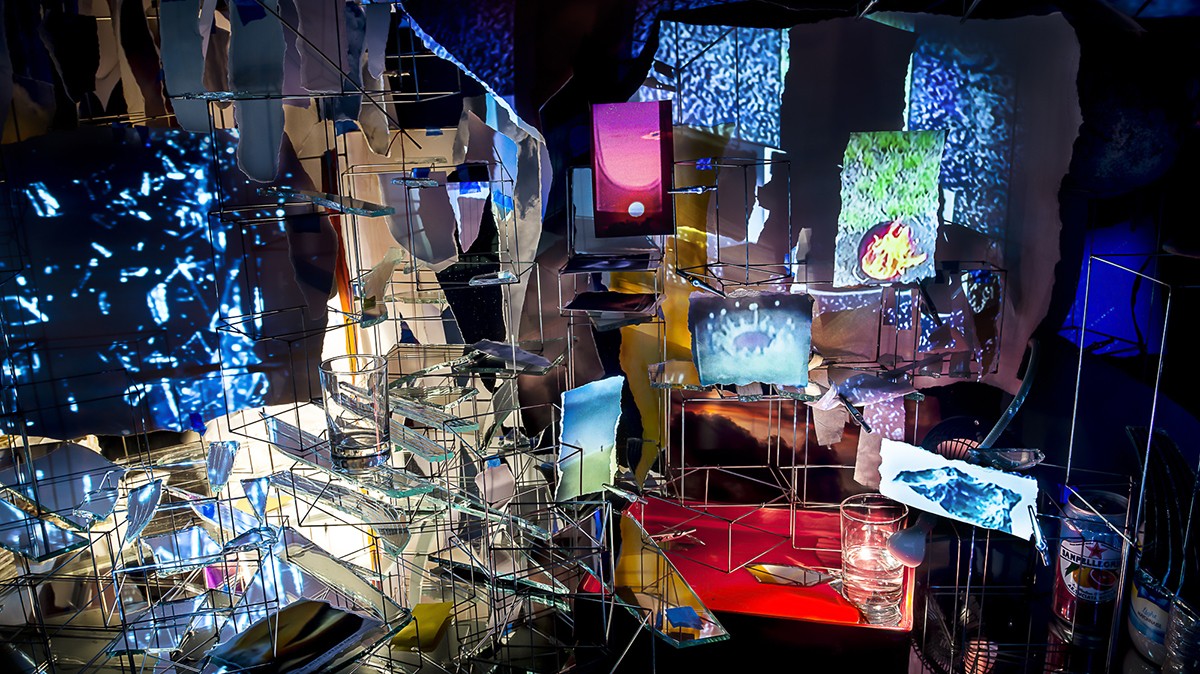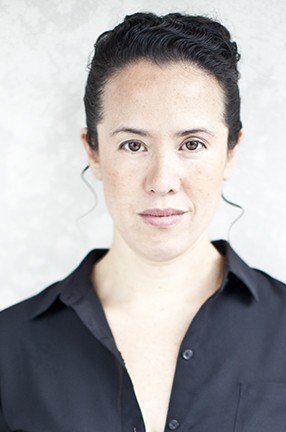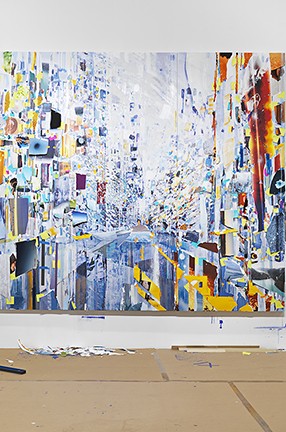Artist Sarah Sze on Working With Neuroscientists
Sarah Sze, a 2003 Macarthur Fellow and a professor in the visual arts program at the School of the Arts whose work has been exhibited in museums worldwide and spans sculpture, multimedia installations, collage and painting, spent 2019 as the Alan Kanzer artist-in-residence at the Zuckerman Institute. An interdisciplinary collaboration between the School of the Arts and Zuckerman, the Kanzer program gives visual artists time to forge interactions with scientists working on the brain, the senses, perception, learning and memory.
The following are edited excertps from Sze’s account of her year at the Zuckerman Institute.

My host for the Zuckerman Institute residency program was Richard Axel, a professor of pathology and biochemistry and a Nobel laureate. At the beginning of the year, we gave a public talk together moderated by Rui Costa, director and chief executive officer of the Zuckerman Institute, and Carol Becker, dean of the School of the Arts. We discussed science, art and the construction of reality.
Richard has a deep reverence for art. He spoke about how a lab is defined by 1) the beauty and elegance of the experiments, and 2) the intelligence and insight with which the results of the experiments are read. This simple structure has many parallels in a studio.
I once said in an interview that "most artists are addicted to looking as much as they are to making art.” I think the neuroscientists I met with share a kind of addiction to looking at art. Deeply committed to questions concerning perception and consciousness, they are incredibly sophisticated viewers. I invited them and their lab members for tours of my recent show at the Tanya Bonakdar Gallery in New York and my recent installation at the Museum of Modern Art, as well as a visit to my studio.
A Narrative of Time and Space
I also spent time with several neuroscientists in their labs, including Michael Shadlen, who explores decision-making and how the principles of brain function that underlie simple forms of decision-making are also the building blocks of human cognition. We share an interest in how time and space are not perceived by a clock—not in seconds and minutes, inches and miles—but through narrative drive.
One might more quickly associate narrative drive with literature; however, I'm thinking about it a lot in my video work and Michael is investigating it in his lab. We are both looking at how expectations, anticipation and desire for completion drive perceptions of time.
I’m working on a series for a show at the Guggenheim New York in the fall of 2020 and experimenting with how to create a sense of anticipation and narrative development as my installation follows the museum’s ramp. How do I create choreography of work over time that ebbs, flows and crescendos? My efforts fit Michael’s description of art as a constant rhythm between tension and release. When I asked him about his interest in art, he said that of all the reasons for being alive on earth, the arts were at the top.

How the Brain Sees the World
In her lab, where she works with flies, Rudy Behnia focuses on how the human brain sees the world and distinguishes colors and emotions, revealing complex sensory information. One of the metrics she uses is the “flicker fusion rate,” which is the frequency in which we perceive flicker. If we're looking at a screen, we don't see the flicker, but a fly has a higher flicker fusion rate than ours and sees the screen flickering in frames.
In my paintings, I think of perception in terms of hue, color or tone, and additionally have also always been interested in how to represent speed in a still image. Yet I hadn't thought of it in terms of flicker speed. After spending time with Rudy, I started a video piece that plays with the perception of image intensity and velocity, incorporating this fracturing, a speeding up or slowing down of shutters. When discussing the evolution of fly vision, Rudy discussed the eye's ability to perceive color during the day and black and white at night, and specifically how the transition between these two states falls generally at dusk and dawn.
I’ve also been focused on these moments of transitional light at dusk and dawn for a big public project I’m doing in New York in the spring. It’s probably the largest permanent sculpture I’ve ever made, and it behaves like a kind of sweeping timekeeper. The work tracks time through images of the sky, and is framed at either edge by images of dusk and dawn. Where night is, the work disappears.
Portraits Based on Memories
Eric Kandel, a Nobel laureate, and Daphna Shohamy both study memory. Eric identified the physiological changes that occur in the brain during the formation and storage of memories, and Daphna works on how memories of our experiences shape our decisions. I’ve been exploring how we construct images of ourselves through the memories we retain versus the ones that we let go, so this was fertile ground for Eric and Daphna. We discussed a portrait series I had done where the portrait was in many ways set up like an experiment. I asked the subjects to consider the 12 most important events in their life. Each subject listed the events on a piece of paper, and gave it to me sealed, like a letter. I opened the letter on my own and drew the portrait by drawing the memories the way I interpreted them, in no particular order.

Mastering a Skill
Finally, I worked with Rui Costa, who researches movement and brain mechanisms. We explored spontaneous skills and mastery of a skill.
Mastery is a word that isn’t used much in contemporary art anymore, but we discussed it in terms of when a skill becomes so fluent that it becomes automatic—for example, the mastery of playing a musical instrument or a sport. How, after mastering a skill, do you then break it down again? How do you recreate a kind of innocence to potentially redefine the very skill? A great cellist or tennis player might do this, revolutionizing the craft itself.
Rui saw a parallel in how I used to believe that my sculptures came in threes. The first piece would be fresh and unknown to me. The second one would follow from the original sculpture and be more perfected or, to use Rui’s word, masterful. I would understand all of the parts and the technical problems, but the piece would perhaps begin to lack a kind of freshness. The third version would be the end because--it would be too familiar and parts might start to feel staged; it would be the death of that idea, time for me to start anew.